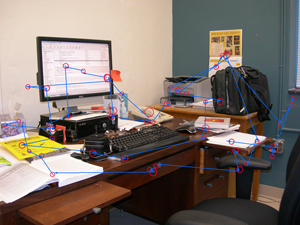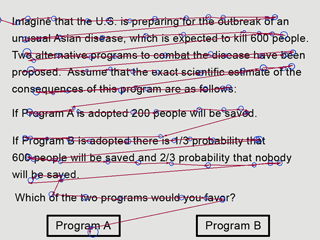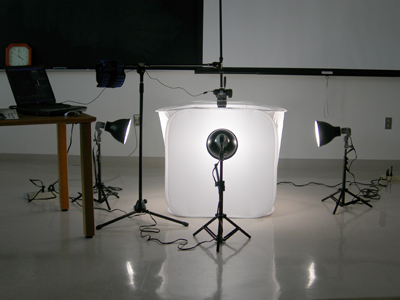My lab is equipped with an EyeLink 1000 video-based eye-tracking system (SR Research Ltd., http://www.sr-research.com/). This is a two-computer system: One computer (referred to as the host computer) runs the eye-tracking software and collects eye data. The second computer (referred to as the display computer) runs software that is used to display images to the participant and record responses (such as button presses to provide reaction times, and mouse clicks to indicate choices on a 4AFC recognition test). The display computer can also receive eye data from the host computer, which can be used in near-real-time applications (e.g., drawing a gaze-contingent window of a given size around the participant’s current eye position to limit the amount of the display that is currently visible). The display computer can also be used to run experiments that do not involve eye tracking.
The system can track an observer’s gaze at a rate of 1000 Hz monocularly or 500 Hz binocularly, and it can be operated in several configurations. In the desktop configuration (shown in the image), the tracker is used in combination with a chin rest and can track an observer’s gaze over a range of 30° x 22° (e.g., a 21 in. monitor at a distance of 80 cm), with average calibration accuracy better than 0.4°. In the remote configuration, it is used without a chin rest and can track an observer’s gaze over the same range (with slightly lower accuracy). In the tower configuration, the system can track an observer’s gaze over a range of approximately 60° x 40° (e.g., a 30 in. monitor at a distance of approximately 65 cm). My lab also has a 30 in. LCD monitor to enable me to take advantage of the EyeLink 1000’s full tracking capability. In addition to the eye-tracking hardware, the system is also equipped with the SR Research Data Viewer program, which allows for multiple data-visualization formats (including trial playback as a video) and multiple output formats (including multiple types of eye-data reports, eye data superimposed over static images, and video files of trial playback). I also have the SR Research Experiment Builder program, which is an experiment development and deployment software package designed specifically for EyeLink eye trackers that simplifies development of numerous eye-tracking and non-eye-tracking paradigms (and does not require knowledge of programming languages). The scan path and corresponding video clip below were created from my own data using the Data Viewer program.

In my research, I use the eye-tracking system to record where people look when viewing images; however, the system is also ideal for reading-based research. To that end, I am currently collaborating with two colleagues, Dr. Todd McElroy and Dr. Hall Beck, in two separate reading-based studies. The scan path (i.e., sequence of fixations and saccades) on the left and video on the right illustrate the paradigm used in collaboration with Dr. McElroy (Note: These are not actual particpant data, but they are actual eye data generated by me).

The lab is also equipped with two other computers that can be used to run non-eye-tracking experiments, making it possible to collect data from up to three participants in a given session. All experiment-running programs are written in the C programming language (by me) and are based on template programs provided by SR Research. My lab also has photographic equipment for the creation of multi-layered scenes (a Canon EOS Rebel XSi digital SLR camera and a photographic light tent for photographing objects).
